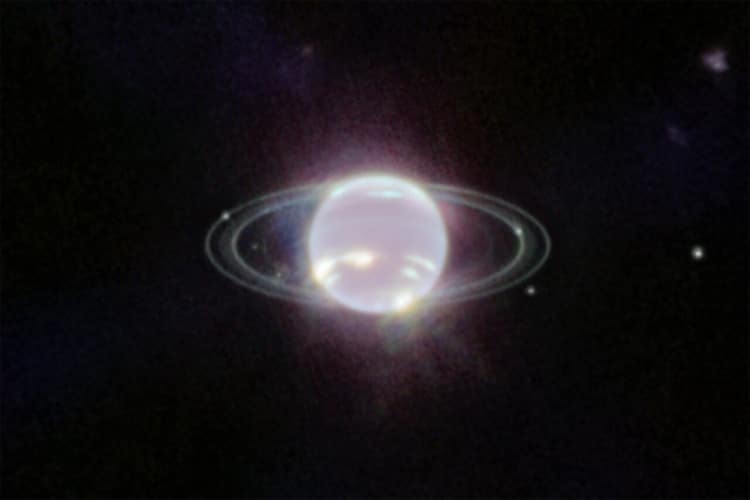First image of Neptune’s rings in decades captured by the James Webb Space Telescope
Sun 25 Sep 2022
New York: NASA has announced that its James Webb Space Telescope has captured the clearest view of Neptune’s rings in more than 30 years.
Most striking in Webb’s new image is the crisp view of the planet’s rings — some of which have not been detected since NASA’s Voyager 2 became the first spacecraft to observe Neptune during its flyby in 1989. In addition to several bright, narrow rings, the Webb image clearly shows Neptune’s fainter dust bands.
“It has been three decades since we last saw these faint, dusty rings, and this is the first time we’ve seen them in the infrared,” Heidi Hammel, a Neptune system expert and interdisciplinary scientist for Webb, said in a statement.
According to NASA, Webb’s extremely stable and precise image quality permits these very faint rings to be detected so close to Neptune.
Webb also captured seven of Neptune’s 14 known moons. Dominating this Webb portrait of Neptune is a very bright point of light sporting the signature diffraction spikes seen in many of Webb’s images, but this is not a star. Rather, this is Neptune’s large and unusual moon, Triton. James Webb Neptune image
Covered in a frozen sheen of condensed nitrogen, Triton reflects an average of 70 per cent of the sunlight that hits it. It far outshines Neptune in this image because the planet’s atmosphere is darkened by methane absorption at these near-infrared wavelengths.
Neptune has fascinated researchers since its discovery in 1846. It is 30 times farther from the Sun than Earth, and it orbits in the remote, dark region of the outer solar system. This planet is characterised as an ice giant due to the chemical makeup of its interior. James Webb Neptune image
Source: Agencies

 Apr 19 2024
Apr 19 2024













